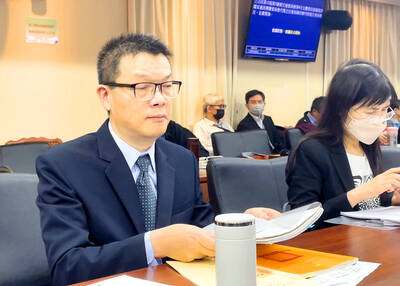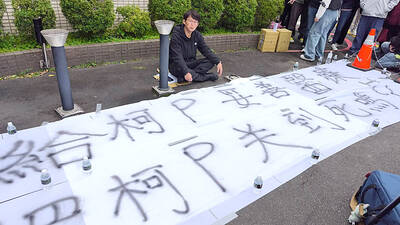The Philippines is positioning itself as Taiwan’s “gateway” to Southeast Asia and hopes to spur two-way economic and educational exchanges with Taiwan, Manila Economic and Cultural Office in Taipei (MECO) director for commercial affairs Michael Alfred Ignacio said.
Ignacio said he has seen “very strong interest” from the Taiwanese government in advancing its New Southbound Policy and Taiwan was the second-largest source of foreign direct investment (FDI) in the Philippines last year.
The southbound policy, adopted in May 2016, aims to forge links with ASEAN members, as well as South Asian nations, Australia and New Zealand.
Taiwanese FDI in the Philippines last year was 10.833 billion pesos (US$203.12 million at the current exchange rate), about a sevenfold increase from 1.608 billion pesos in 2016 and double the amount that Taiwan invested in 2015, Philippine Statistics Authority (PSA) data showed.
“We want to become Taiwan’s gateway to Southeast Asia and New Southbound countries,” Ignacio said.
The Philippines is Taiwan’s closest neighbor, its economy is growing at a strong pace, English is the main language of business and it has a market of 104 million people, making it a good country to partner with in the search for engagement with southbound countries, Ignacio said.
The Philippines has “been working very closely with Taiwan’s government to make [the policy] a reality,” said Ignacio, who started in the position 11 months ago.
Under the southbound policy and Manila’s strategy to engage Taiwan economically, partnerships are starting to materialize, he said.
In terms of industrial capacity building, for example, Taiwan has helped train Philippine engineers to develop the Philippines’ industrial capabilities and bolster its participation in the global electronics, manufacturing and Internet of Things supply chains, he said.
The countries also cooperate in industries where the Philippines has the best chance of success, such as shared service facilities aimed at improving the competitiveness of micro, small and medium-sized enterprises and IC design, Ignacio said.
He said the Philippines also wants to increase two-way trade and exchanges in education.
Taiwan ranked as the Philippines’ eighth-largest trading partner with bilateral trade of US$7.19 billion, PSA data showed.
It was also the country’s 10th largest export market and the eighth-largest exporter to the Philippines, the data showed.
A key initiative has been to intensify efforts to introduce Philippine products on Taiwan’s mainstream market, Ignacio said, a shift from what he called the “xenocentric” approach of importing products to Taiwan to sell in Philippine stores and to Philippine expatriates.
MECO is hosting an in-store promotion at City Super in Taipei for a second year running to showcase a variety of Philippine specialties, including snacks that go back to Spanish colonial days, such as chicharron, ethnic products, dried mangoes, pineapple juice, mango liquors and coconut oil, he said.
The office was involved in handpicking the items that have the most potential to succeed with Taiwanese consumers, he added.
The in-store promotion follows a visit in March by a delegation of Philippine food exporters to explore the Taiwanese market at the annual Sourcing Taiwan trade show and is to be followed by a large exhibition of Philippine products at the upcoming Taipei International Food Show from Wednesday to Saturday next week.
In terms of educational exchanges, the office has promoted the Philippines as a destination for Taiwanese students to study English, communications, literature, and the humanities and arts, Ignacio said.
“We want to promote our expertise, so we can help each other,” he said. “The Philippines offers excellent education and studying in the Philippines is very cheap.”
“We have a successful proof of concept with Japan and Korea,” Ignacio said. “Japanese and Koreans have been studying English in the Philippines for maybe 20 years. Why not Taiwanese?”

The High Prosecutors’ Office yesterday withdrew an appeal against the acquittal of a former bank manager 22 years after his death, marking Taiwan’s first instance of prosecutors rendering posthumous justice to a wrongfully convicted defendant. Chu Ching-en (諸慶恩) — formerly a manager at the Taipei branch of BNP Paribas — was in 1999 accused by Weng Mao-chung (翁茂鍾), then-president of Chia Her Industrial Co, of forging a request for a fixed deposit of US$10 million by I-Hwa Industrial Co, a subsidiary of Chia Her, which was used as collateral. Chu was ruled not guilty in the first trial, but was found guilty

DEADLOCK: As the commission is unable to forum a quorum to review license renewal applications, the channel operators are not at fault and can air past their license date The National Communications Commission (NCC) yesterday said that the Public Television Service (PTS) and 36 other television and radio broadcasters could continue airing, despite the commission’s inability to meet a quorum to review their license renewal applications. The licenses of PTS and the other channels are set to expire between this month and June. The National Communications Commission Organization Act (國家通訊傳播委員會組織法) stipulates that the commission must meet the mandated quorum of four to hold a valid meeting. The seven-member commission currently has only three commissioners. “We have informed the channel operators of the progress we have made in reviewing their license renewal applications, and

Taiwan People’s Party (TPP) Chairman Huang Kuo-chang (黃國昌) yesterday appealed to the authorities to release former Taipei mayor Ko Wen-je (柯文哲) from pretrial detention amid conflicting reports about his health. The TPP at a news conference on Thursday said that Ko should be released to a hospital for treatment, adding that he has blood in his urine and had spells of pain and nausea followed by vomiting over the past three months. Hsieh Yen-yau (謝炎堯), a retired professor of internal medicine and Ko’s former teacher, said that Ko’s symptoms aligned with gallstones, kidney inflammation and potentially dangerous heart conditions. Ko, charged with

Taiwan-based publisher Li Yanhe (李延賀) has been sentenced to three years in prison, fined 50,000 yuan (US$6,890) in personal assets and deprived political rights for one year for “inciting secession” in China, China's Taiwan Affairs Office spokesman Chen Binhua (陳斌華) said today. The Shanghai First Intermediate People’s Court announced the verdict on Feb. 17, Chen said. The trial was conducted lawfully, and in an open and fair manner, he said, adding that the verdict has since come into legal effect. The defendant reportedly admitted guilt and would appeal within the statutory appeal period, he said, adding that the defendant and his family have